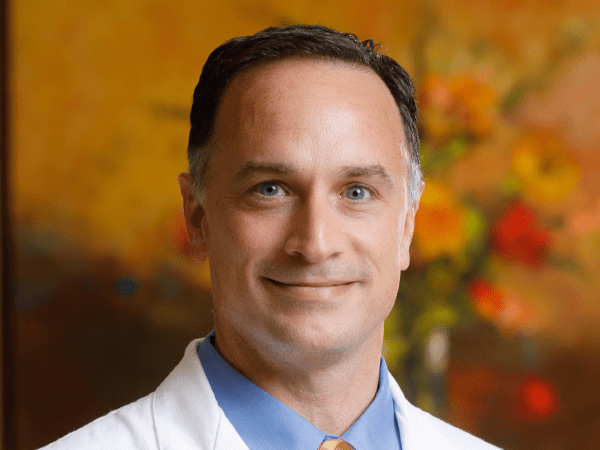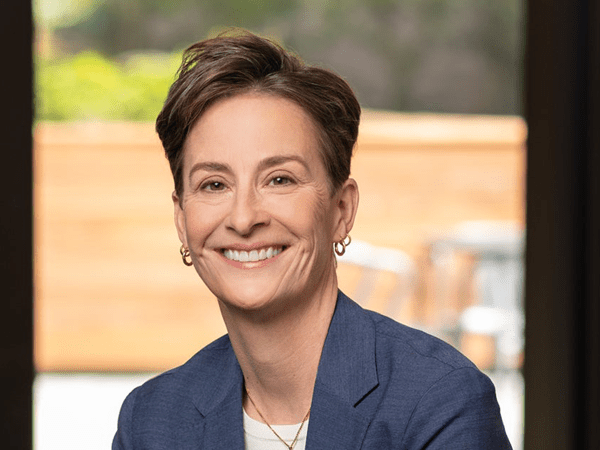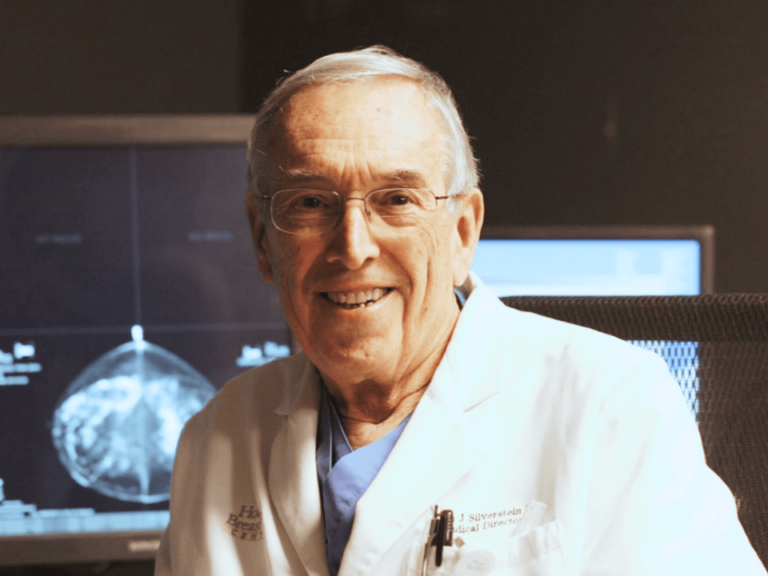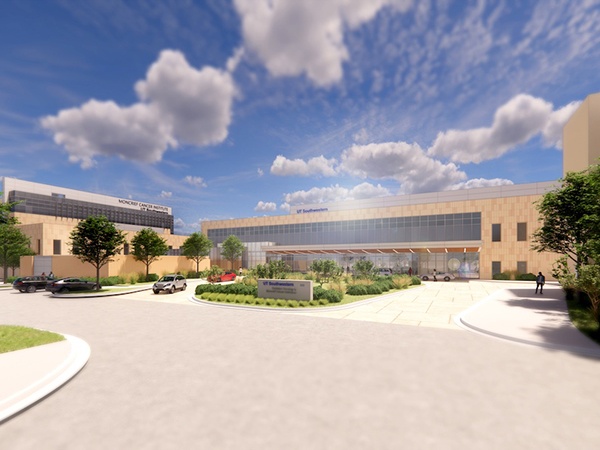In September, Norm Coleman received great news: he qualified for the Ironman 70.3 World Championship in New Zealand.


Source: Bill Branson/NCI
It’s a 70.3-mile race influenced by weather conditions and terrain: you swim 1.2 miles, bike another 56, and run 13.1 more.
Norm, a guy about to hit 80, was beating the times of other super-athletes half his age.
“Probably aren’t 20 people in the world that can still do that—doing fine,” Norm said, speaking with Otis Brawley and me on Jan. 28, as we did an oral history for the Cancer History Project. “Had some symptoms. Ended up with a malignancy that I’m doing battle with now. You live a good life. You don’t expect things to happen. But they do when you get into these age groups. So… It’s that challenge. Yeah.”
The malignancy in question was a dedifferentiated liposarcoma—DDL for short.
Norm died on March 1 at 79.
At NCI, Norm was the associate director of the Radiation Research Program, senior investigator in the Radiation Oncology Branch in the Center for Cancer Research, and leader of a research laboratory at NIH. Also, Norm was the founder of the International Cancer Expert Corps, a non-profit he created to provide mentorship to cancer professionals in low- and middle-income countries and in regions with indigenous populations in upper-income countries.
If there are mountains and trails where his soul is resting, he will be happy.
Bruce Chabner
We started what Norm, Otis, and I envisioned as a series of interviews. Yet, Norm was clear that there was no way to know how much time he had. He was on a clinical trial of an immunotherapy, but with DDL, it was a longshot.
As we spoke, Norm was his old self—a guy with great stories to tell, talking fast, letting clauses clash and dangle. It was like grabbing dinner and listening, listening, listening, except it was clear that this conversation will end, abruptly, soon.
How do you start an oral history? If you begin in the beginning—your parents, the city of your birth—this says something about you. Norm started his storytelling with New Haven in 1968, a city torn by race riots:
When I was in med school, in 1968-1969, in New Haven, they had the Black Panther trials. So, those were the days when all the things were so bad, people would rather burn down the cities than live in it.
I was a little bit in community work, and the price of inequality and the injustices struck me at that point in time. It’s been a theme that’s in many ways been driving me for almost my entire career since then; the idea of people having such inequality—essential things that people would take for granted aren’t available—seem to be not a good thing.
So, the theme of that really percolated through my whole life.
We thought we’d have more time, but one long, fascinating interview was all we ended up with. It meandered through the landmarks of Norm’s life and career: choosing oncology, getting triple-boarded, early days of radiation therapy, illustrious mentors, illustrious friends, global health, deep sadness and concern about events in the Middle East today.
We’ll publish it in the Cancer History Project next week.
Brooklyn-born and New Jersey-raised, Norm graduated from the University of Vermont with a B.A. in mathematics, then graduated from Yale University School of Medicine in 1970. He finished internship and residency in internal medicine at the University of California, San Francisco, medical oncology at NCI, and radiation oncology at Stanford.
Bruce Chabner, Norm’s mentor during his NCI fellowship in 1972-1973, became a lifelong friend. At the time, Chabner was the chief of the NCI Pharmacology Branch. Said Chabner, who is now the director of clinical research at Mass General Cancer Center at the Massachusetts General Hospital:
Norm was one of a kind, a uniquely passionate, dedicated, funny, and incredibly loyal friend to those he loved. An athlete who did Ironman races in his 70s, he never lost his desire to explore new challenges.
He wasn’t tied down to “standard” therapies and became eminently knowledgeable about new chemotherapy and immunotherapy in addition to his prime specialty, radiation therapy.
I loved working with him during his medical oncology fellowship—on the wards: 12West at NCI, exploring the enzymology of antimetabolites and hearing about his weekend camping trips and hikes with Karolynn and friends.
His idols were Henry Kaplan, Saul Rosenberg, Eli Glatstein, and Vince DeVita, the lymphoma giants. In his own way, he became a giant as well.
If there are mountains and trails where his soul is resting, he will be happy.


Source for all photos: International Cancer Expert Corps
Norm trained with Henry Kaplan at Stanford, then joined the Stanford faculty, leaving for Harvard in 1985. At Harvard he served as the Alvin T. and Viola D. Fuller American Cancer Society Professor and chairman of the Joint Center for Radiation Therapy at Harvard Medical School.
Monica Bertagnolli, now the NIH director and a former NCI director, met Norm when she was a resident in surgery at Harvard.
“Norm was a gentle and caring physician and mentor, and it was always clear that people, particularly those with special challenges or difficult social circumstances, were his greatest concern. He was such a positive force and will be greatly missed,” Bertagnolli said.
To recruit Norm to NCI, then-director Richard Klausner revamped the institute’s radiation therapy research portfolio, making Coleman the director of the Radiation Oncology Sciences Program, chief of the Radiation Oncology Branch in the NIH Clinical Center, and associate director of the Radiation Research Program, which administered NCI’s grants in radiation research (The Cancer Letter, Feb. 5, 1999).
Reacting to Norm’s death, Klausner, now a biotechnology entrepreneur, said:
What a loss!!! Recruiting Norm to the NCI was a highlight of my time at NCI. Norm had four characteristics that made him outstanding:
- First was his dedications to patients, both his and those around the world who could not access places like NCI and doctors like Norm;
- Second, he was a curious, generous and dedicated scientist who wanted to push the boundaries of our understanding about how radiation interacted with biology;
- Third, he was the ultimate mensch, a delight to work with, to be with and a selfless colleague where the outcome of work vastly superseded the credit he sought or expected—always crediting instead the colleagues he felt lucky to be among;
- Fourth, he was an engaged citizen and physician of the world, from international partnerships such as the All-Ireland Cancer Consortium to the King Hussein Medical Center to his work post 9/11 and after Fukushima.
Finally, Norm was just a delight to spend time with—fun, funny, a valuable thought partner who always brightened a conversation with generosity, listening, and humor.
Norm will be sorely missed.
When Norm joined NCI in 1999, Robert Wittes, then the NCI deputy director for extramural science said: “We look forward to benefiting from his scientific and clinical insight, his wealth of managerial experience, and his famous sense of humor” (The Cancer Letter, Feb. 5, 1999).


In 2011, Valerie Strauss, a reporter with The Washington Post, walked into Norm’s office at an HHS agency called the Administration for Strategic Preparedness and Response (ASPR), one of his gigs.
She found Norm wearing a preposterous hat “with a stuffed groundhog attached.”
Norm was a gentle and caring physician and mentor, and it was always clear that people, particularly those with special challenges or difficult social circumstances, were his greatest concern. He was such a positive force and will be greatly missed.
Monica Bertagnolli
“It’s a good thing that the 66-year-old scientist and physician has a strong sense of humor. His days are immersed in two subjects that spark primal fear in most people: terrorism and cancer,” Strauss wrote in a profile of Norm.
At the time, Norm was working on applications of what is known about the effect of radiation on the human body to develop approaches to radiological or nuclear events. Norm was also involved in responding to the 2011 Fukushima Daiichi accident.
“After 9/11, a few of us began to ask the question, ‘What does our specialty know that can help the country if there is a nuclear incident?’” Norm said to Strauss at the time.
It turns out, Norm’s groundhog hat has a back story and a function other than amusing reporters.


“Colleagues from ASPR will remember his Groundhog Day hats. It was his way of infusing humor into his challenge to not keep repeating the same discussions over and over, but to make real progress, as we developed playbooks for how the federal government would work together to respond the national disaster planning scenarios we were asked to prepare for,” said Ann Knebel, a colleague from ASPR and one of Norm’s co-authors on a scary document called “Medical planning and response manual for a nuclear detonation: a practical guide.”
For this work, in 2011 Norm received the Samuel J. Heyman Service to America Medal Award. He received the 2016 Failla Award from the Radiation Research Society, and the 2023 D.A. Henderson Lifetime Achievement Award of the Administration for Strategic Preparedness and Response in the U.S. Department of Health and Human Services (The Cancer Letter, Feb. 2, 2024).
“Norm was an exceptional physician-scientist and humanitarian,” said Andrew von Eschenbach, former NCI director. “He was devoted to patient care while enthusiastically sharing his expertise globally so that all patients could benefit from the advances in oncology.
“He did everything with joy and with a sense of humor that lifted spirits. I was proud to have him on the NCI team and honored to have him as a friend.”
John Niederhuber said he often relied on Norm’s guidance when he served as the NCI director.
Said Niederhuber:
As I have repeatedly reflected on the passing of a dear friend and admired cancer physician-scientist, I have always returned in my thoughts to the recognition that Norm was one of those true blessings in my life.
I always admired his drive and his focus to find ways to make a difference in the care of the disadvantaged cancer patients living in the underserved developing parts of our world.
Norm was one of the rare physician-scientists who actually lived his dream.
Norm was both a true blessing to all of us who knew him and a role model on how we should live our lives to be difference makers.
He has certainly left this world a better place and all of us with the challenge to continue on his path.
We all will miss his enthusiasm and his special wit.
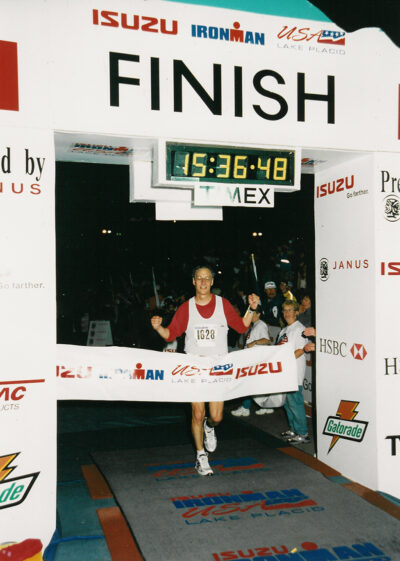

Harold Varmus, former NIH and NCI director described Norm as “a source of wise counsel, especially about the conduct of radiological research across the Institutes, during my time as NIH Director, and we shared a deep interest in making advances in medical science available globally.
“I was very glad to have him on our team.”
Former NCI Director Ned Sharpless noted Norm’s astonishing breadth of interests and expertise.
“Norm was a beloved leader of the NCI Intramural Program and a true giant of modern radiation oncology,” Sharpless said. “I especially enjoyed his amazing breadth of interests relating to knowledge and interests of all aspects of radiobiology, serving as a thought leader across the USG on this topic; and working with NASA and FDA and State and DOE and DOD. He was a wonderful public servant.”
NCI Director Kimryn Rathmell announced Norm’s death to the institute’s staff.
“I extend my heartfelt condolences to his family, friends, and the many colleagues who had the pleasure of knowing him. I wish I had known him myself; it is clear he was a remarkable person,” she wrote. “His legacy should be an inspiration to each of us.”
Otis Brawley, the Bloomberg Distinguished Professor of Epidemiology and Oncology at Johns Hopkins University and co-editor of the Cancer History Project, who interviewed Norm with me, describes him as a “true Renaissance man.”
“He was a medical oncologist and a radiation oncologist, but he was also a very nice guy with an amazing sense of humor, who was very much aware of the broader world around him,” Brawley said. “His contributions span the areas of cancer treatment to world peace. We have a man who is honored by the National Coalition for Cancer Survivorship for his contributions to cancer survivors, but also by the U.S. government for his contributions to radiation safety and arms control. The diversity of his contributions is amazing and literally too many to count.”
Disparities and global health


Norm’s approach to health disparities and global health begins with listening.
“You listen, you listen, you listen, you hear, and then you listen,” he said to us as our conversation shifted to health disparities.
At NCI, Norm’s Radiation Research Program set up the Cancer Disparities Research Partnership Program (CDRP). He credits Frank Govern, associate director of RRP, with coming up with the idea and running the disparities program.
Established in 2001, CDRP is described as a “pioneering funding model whose goal was to increase participation of medically underserved populations in NCI clinical trials. CDRP’s Cooperative Agreement funding supported for awardees the planning, development, and conduct of radiation oncology clinical research in institutions not traditionally involved in NCI-sponsored research and cared for a disproportionate number of medically underserved, health-disparities populations.”
A paper assessing two decades of CDRP’s work was published by JNCI last September.
In 1996, Klausner’s NCI spearheaded the formation of the Middle East Cancer Consortium, which was made possible by a series of multilateral agreements that brought together Israel, Palestine, Jordan, Egypt, Turkey, and Cyprus (The Cancer Letter, May 24, 1996).


Later, Klausner envisioned building a cancer center in Jordan.
Norm’s words:
Rick Klausner made some arrangements in Jordan, and Samir Khleif was going to go out and do something in Jordan, and he called [CDRP Director] Frank [Govern], and said, “Frank, what do I do?”
Because of our experience, we helped guide Samir into how you go about building his program. He’s a very honorable, very trustworthy guy. How it takes time to build trust in all these community settings. When you want to do something, it takes two years for people to realize that you’re the real deal, and then all the doors open up.
So, Samir helped build that program that became the King Hussein Cancer Center, with local investment, Samir being on site, bringing in resources of mentorship to help them do their own work, building up their excellence.
Khleif, now a biomedical scholar & professor and director of the Center for Advanced Immunotherapy Research at Georgetown University, has a vivid memory of that day—almost exactly 25 years ago.
Norm was sitting in his office at the second basement of Building 10 at NIH.
The first thing that struck Khleif was a figurine of a remarkably ugly-looking man with an extended hand holding a 25-cent coin.
A caption on the figurine read: “Take it and call someone who cares.”
The message on his figurine notwithstanding, Norm was clearly a man who cared—a lot.
Said Khleif:
I met with Norm that day to discuss a mission I was entrusted with by the NCI director to move to Jordan to develop the only cancer center in the Middle East at that time.
Norm, as generous and as caring a person he was, extended his expertise, time, and resources to help me through my mission. Since that moment, Norm and I became close friends and confidants.
Norm had a passion to help, an unwavering desire to positively affect humanity, and an urge to service the underserved.
He was a driving force who extended his expertise to every corner of the world. When I asked him to join me in the endeavor of the King Hussein Cancer Center in Jordan, he jumped straight into it.
He was instrumental in lending his expertise and his staff. Frank Govern and I were able to develop the first Telesynergy system in Jordan, which, until we built internal expertise in oncology, was a lifeline for the center and enabled us to provide proper care and expertise for many difficult cases from top cancer centers in the U.S. Norm was central in this exchange.
Indeed, we were able to save lots of lives because of Norm’s expertise and commitment.
In 2013, Norm founded the International Cancer Expert Corps (ICEC), a nonprofit organization that mentors cancer professionals in low- and middle-income countries and in regions with indigenous populations in upper-income countries.
In our interview, Norm described ICEC as the culmination of his work:
Having experience, having success, knowing what we knew how to do, we went ahead to try to do global health, and we tried to do some kind of a Cancer Peace Corps within NCI, and there really wasn’t quite a model for that.
So, the ICEC was really a cancer Peace Corps to develop mentorship corps where people who would be mentors to help remote places, low- and middle-income countries who are willing to invest in themselves to then have investment.


then Vice President of Managed Healthcare Services at Eli Lilly,
on a U.S. government airplane following the Fukushima Daiichi nuclear disaster in 2011.
Norm’s work remained on the cutting edge. The most recent paper from Norm’s NCI lab, focused on adapting radiotherapy to immunotherapy, was published by Nature Reviews Clinical Oncology last August.
He and Khleif met frequently for breakfasts or lunches at “Le Pain Quotidien” in Bethesda.
Recalls Khleif:
The last time we met was early December, days before he was diagnosed with sarcoma. He reached out because he sensed my distress for what is going on in the Middle East since he knew that I have family, friends, and connection there.
He was highly distressed about what was happening in Gaza, and mostly for the loss of innocent lives. I never saw him more genuinely sad, and it was all about injustice and the lack of empathy of humanity.
We discussed the situation and decided to have a follow up discussion to decide on a path for action. We walked out of the restaurant, stood for a minute, and then he gave me the warmest bear hug that I will never forget.
He looked me in the eye and said, “We can make the world a better place.”
Indeed, we will, Norm. Rest in peace, my friend.


Steven Leibel, Norm Coleman, Eli Glatstein, Stephen Hahn, Allen Lichter at the 2005 ASTRO awards.
A day before he died, Norm wrote a check for $100,000 to ICEC. He did this on a government salary, he quipped.
Norm is survived by wife Karolynn, daughter Gabrielle Coleman, son Keith Coleman, and three grandchildren.
The family has requested that in lieu of flowers contributions should be made to ICEC in his memory.



